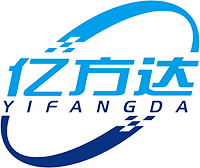A full process analysis of power IC customization service, from component selection to sample testing.
Power IC Customization Service: A Complete Process Analysis from Component Selection to Sample Testing
In modern electronic product design, power management plays a crucial role. Whether it's a mobile phone, computer, or home appliance, the choice of power IC directly affects the device's performance and reliability. In this process, customized power IC services are particularly important. Today, let's discuss the entire process of customized power IC services, from component selection to sample testing, and see how it helps us achieve our ideal design goals step by step.
Understanding Power IC Customization Services
First, what is a customized power IC service? Simply put, it's modifying and optimizing a standard power IC based on the customer's specific needs. It's like going to a restaurant, ordering a signature dish, but wanting less salt or more chili. This personalized service allows the product to better meet the needs and habits of the end user.
Needs Analysis and Component Selection
Before undertaking a customized power IC service, a detailed needs analysis must be conducted. Is this step crucial? Absolutely! Just like building a house, accurate blueprints are essential to ensure the final product is flawless.
1. **Clarify Application Scenarios**: You need to consider the specific applications for the power IC, such as mobile devices, industrial control, or automotive electronics. Different application scenarios have different requirements for power ICs.
2. **Performance Parameters**: Determine key performance parameters such as input voltage range, output voltage, output current, and efficiency. This is like selecting the right bricks and cement when choosing materials.
3. **Environmental Conditions**: Consider environmental factors such as operating temperature and humidity. Some power ICs need to operate under extreme conditions, so selection must be careful.
Next, the selection process is like choosing ingredients at a supermarket. You'll see many different types of components. How do you find the most suitable ones? This requires professional knowledge and experience. Choosing the right power IC can effectively avoid problems in the subsequent sample testing phase.
Sample Design and Simulation
Once the power IC is selected, the next step is sample design. The importance of this step goes without saying. The design process is like building a model; not only must the appearance be considered, but also the stability and functionality of the model.
1. **Schematic Design**: In this phase, engineers will draw the schematic diagram based on the requirements and the selected power IC. Ensure all connections are appropriate and meet design specifications.
2. **PCB Layout**: After designing the schematic diagram, the next step is the PCB (printed circuit board) layout. A reasonable layout can reduce electromagnetic interference and improve power efficiency.
3. **Simulation Testing**: Before actually manufacturing samples, simulation software can be used to test the design. This is like building a small model with sand before building a house to see if the structure is stable.
Sample Production and Testing
After the design is complete, the next step is sample production. At this point, the advantages of customized power IC services begin to show:
1. **Sample Production**: Transforming the verified design into an actual circuit board. This sample production is tailored to specific needs, ensuring compliance with all previous standards.
2. **Functional Testing**: After sample production, a series of functional tests must be performed, such as short-circuit tests and load tests. These tests are to confirm whether the power IC's performance under various conditions meets expectations.
3. **Performance Optimization**: Data obtained from testing helps further optimize the performance of the power IC. For example, if a part is found to be inefficient, the design can be adjusted in time.
Mass Production Preparation and After-Sales Support
Finally, after sample testing and confirmation, the mass production preparation phase can begin. This is a crucial moment in turning design into reality.
1. **Mass Production Preparation**: Ensure a smooth supply chain for all components and that all preparations for the production line are in place. Imagine if your ingredients aren't ready, you can't cook.
2. **After-Sales Support**: Customized power IC services are not only useful before product shipment, but after-sales support is equally important. Ensure that problems encountered by customers during use can be resolved promptly, enhancing user experience.
Conclusion
Power IC customization service is a complex process involving multiple stages. From component selection to sample testing, each step is not isolated but closely linked. Through this process, the quality and performance of the final product can be ensured, bringing a better user experience to customers. If you have any questions about customized power IC services, please feel free to discuss!
In modern electronic product design, power management plays a crucial role. Whether it's a mobile phone, computer, or home appliance, the choice of power IC directly affects the device's performance and reliability. In this process, customized power IC services are particularly important. Today, let's discuss the entire process of customized power IC services, from component selection to sample testing, and see how it helps us achieve our ideal design goals step by step.
Understanding Power IC Customization Services
First, what is a customized power IC service? Simply put, it's modifying and optimizing a standard power IC based on the customer's specific needs. It's like going to a restaurant, ordering a signature dish, but wanting less salt or more chili. This personalized service allows the product to better meet the needs and habits of the end user.
Needs Analysis and Component Selection
Before undertaking a customized power IC service, a detailed needs analysis must be conducted. Is this step crucial? Absolutely! Just like building a house, accurate blueprints are essential to ensure the final product is flawless.
1. **Clarify Application Scenarios**: You need to consider the specific applications for the power IC, such as mobile devices, industrial control, or automotive electronics. Different application scenarios have different requirements for power ICs.
2. **Performance Parameters**: Determine key performance parameters such as input voltage range, output voltage, output current, and efficiency. This is like selecting the right bricks and cement when choosing materials.
3. **Environmental Conditions**: Consider environmental factors such as operating temperature and humidity. Some power ICs need to operate under extreme conditions, so selection must be careful.
Next, the selection process is like choosing ingredients at a supermarket. You'll see many different types of components. How do you find the most suitable ones? This requires professional knowledge and experience. Choosing the right power IC can effectively avoid problems in the subsequent sample testing phase.
Sample Design and Simulation
Once the power IC is selected, the next step is sample design. The importance of this step goes without saying. The design process is like building a model; not only must the appearance be considered, but also the stability and functionality of the model.
1. **Schematic Design**: In this phase, engineers will draw the schematic diagram based on the requirements and the selected power IC. Ensure all connections are appropriate and meet design specifications.
2. **PCB Layout**: After designing the schematic diagram, the next step is the PCB (printed circuit board) layout. A reasonable layout can reduce electromagnetic interference and improve power efficiency.
3. **Simulation Testing**: Before actually manufacturing samples, simulation software can be used to test the design. This is like building a small model with sand before building a house to see if the structure is stable.
Sample Production and Testing
After the design is complete, the next step is sample production. At this point, the advantages of customized power IC services begin to show:
1. **Sample Production**: Transforming the verified design into an actual circuit board. This sample production is tailored to specific needs, ensuring compliance with all previous standards.
2. **Functional Testing**: After sample production, a series of functional tests must be performed, such as short-circuit tests and load tests. These tests are to confirm whether the power IC's performance under various conditions meets expectations.
3. **Performance Optimization**: Data obtained from testing helps further optimize the performance of the power IC. For example, if a part is found to be inefficient, the design can be adjusted in time.
Mass Production Preparation and After-Sales Support
Finally, after sample testing and confirmation, the mass production preparation phase can begin. This is a crucial moment in turning design into reality.
1. **Mass Production Preparation**: Ensure a smooth supply chain for all components and that all preparations for the production line are in place. Imagine if your ingredients aren't ready, you can't cook.
2. **After-Sales Support**: Customized power IC services are not only useful before product shipment, but after-sales support is equally important. Ensure that problems encountered by customers during use can be resolved promptly, enhancing user experience.
Conclusion
Power IC customization service is a complex process involving multiple stages. From component selection to sample testing, each step is not isolated but closely linked. Through this process, the quality and performance of the final product can be ensured, bringing a better user experience to customers. If you have any questions about customized power IC services, please feel free to discuss!
Related news





